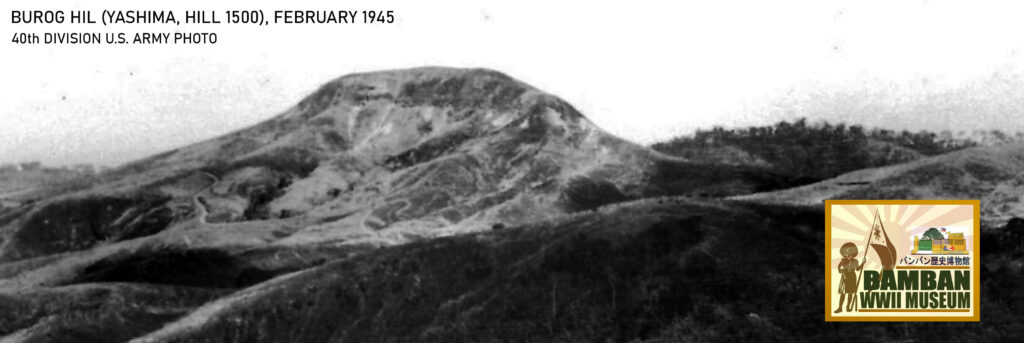
2024 Bamban WWII Museum
Bamban Historical Society
Provincial Government of Tarlac
Tarlac Provincial Tourism Office
FIELD RECON ON JAPANESE WWII TUNNELS OF BUROG HILL (HILL 1500, YASHIMA MOUNTAIN) WITH THE TARLAC PROVINCIAL TOURISM OFFICE STAFF
High above the Bamban Hills rough terrain, Burog Hill majestically located in the center of the Japanese last stand position in 1945; the 14th Naval Combat Sector, where to the right lies the Sapang Kawayan river-valley and to the left, the Sapang Marimla river-valley. In front of these 1,500 feet high Burog is another fortified hill-mass; the Japanese called Hakozaki Mountain (Buok Hill). Behind Burog, to the west, is the fortress Hill 1700.

On both the east and west slopes of the Burog, the Japanese navy personnel of the 14th Naval Combat Sector prepared and utilized series of tunnels and fortified with automatic cannons, machine gun nests, mortars and rifle positions against advancing troops of the 185th Infantry, 40th Division U.S. Army and assisted by Filipino guerrillas.
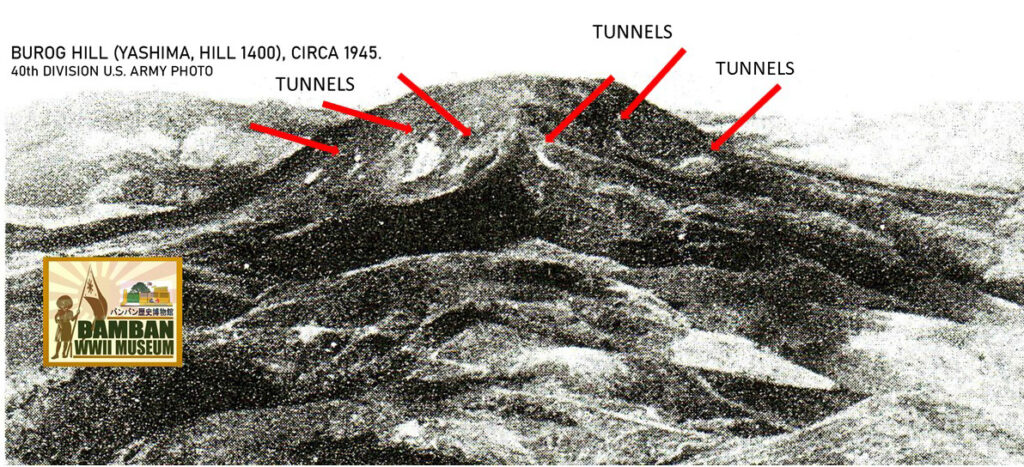
It was February 1945, at the height of the Battle of Bamban Hills.
Recently, a combined group from the Tarlac Provincial Tourism Office, the Bamban WWII Museum and Aeta Mag Antsi conducted a field survey on the condition of the Japanese WWII tunnels on the east side of Burog Mountain.
At present, there are only few surviving Japanese war tunnels intact or open. The past 79 years has indeed affected much of these tunnels, as volcanic ass filled the inside of the tunnels and sometimes, the tunnel openings are already filled with debris and eroded soil from upper slopes.
The war tunnels on the upper slopes facing east are smaller, typically troop shelters and defensive positions on tunnel entrances. However, the depth of these tunnels may reach from 50 to 100 feet, with laterals. With the debris already filled inside the tunnel laterals, one can only crawl in order to get inside and conduct survey.

At this time of the year, the thick foliage of the mountain has been reduced significantly due to summer. It’s perfect time to search for the Japanese war tunnels. Bamban Historical Society / Bamban WWII Museum already conducted surveys in the past years. Several of the tunnel openings are already filled with eroded soil.
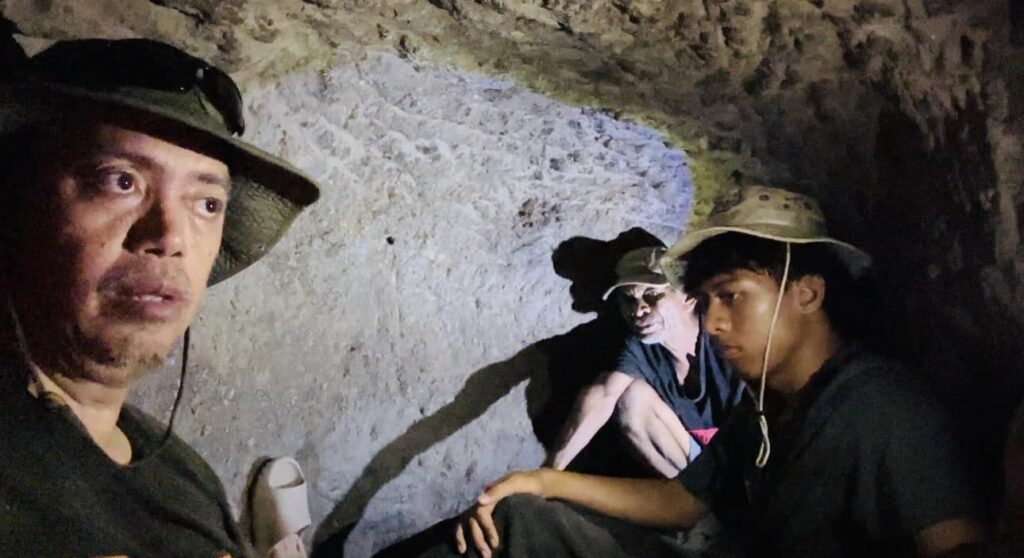
On the western slope, there must be many tunnels as evident on photographs taken by the 40th Division and available at Bamban Museum. At present, most of these tunnels are already closed due to erosion.
As we descended Burog Hill, the view of the valleys on both sides reflected a sense of WWII History on my part as historian. These tunnels are tangible proofs of the battle that had fought, where men died and buried in the abyss of forgotten memories of the tragic war.
We hope that these tunnels be preserved for future generations to learn the lessons of history happened there.
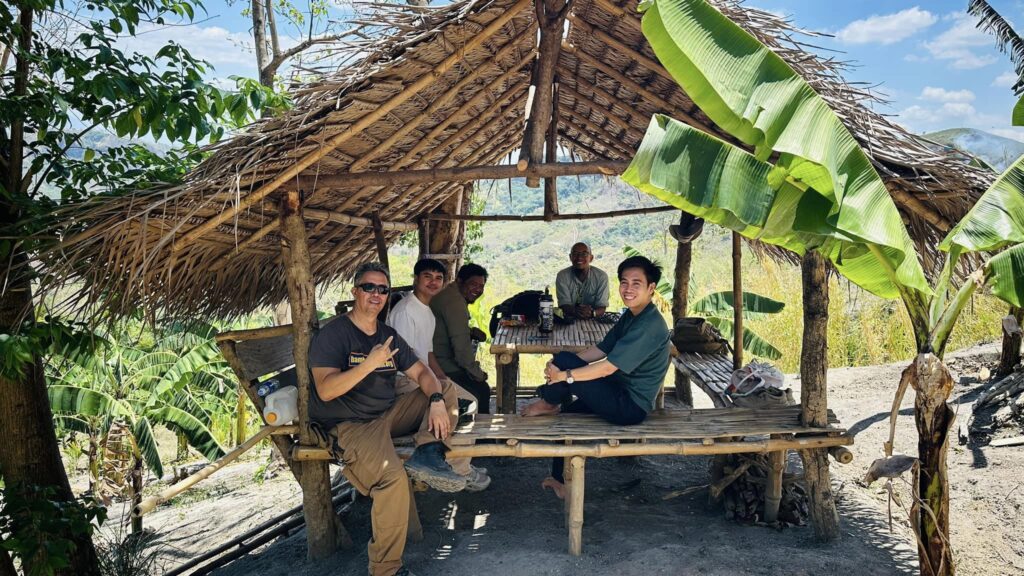
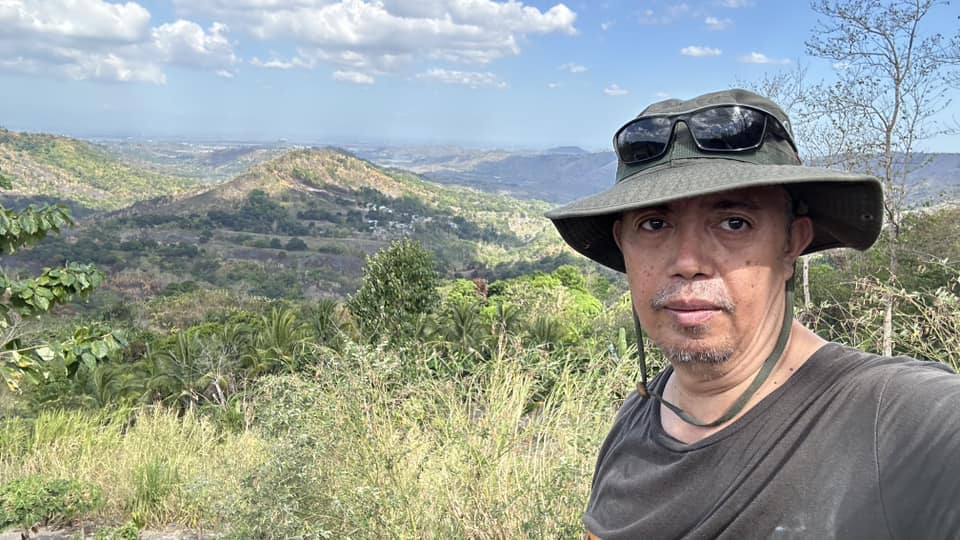
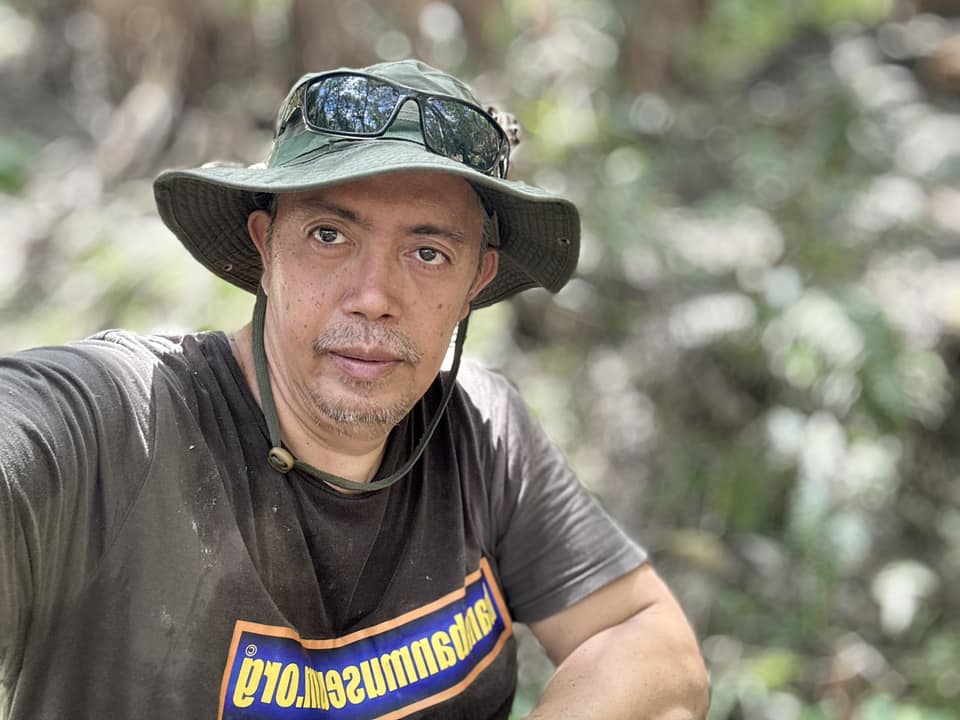
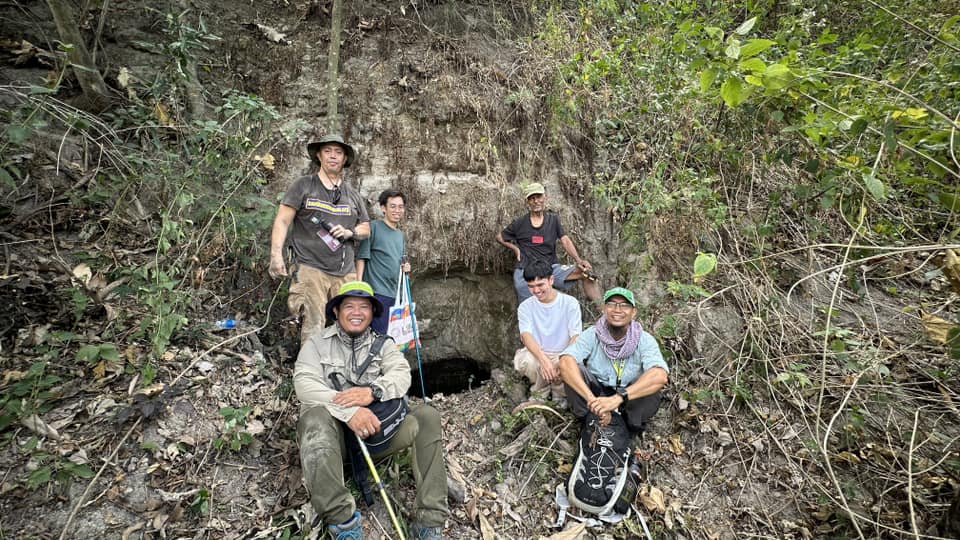



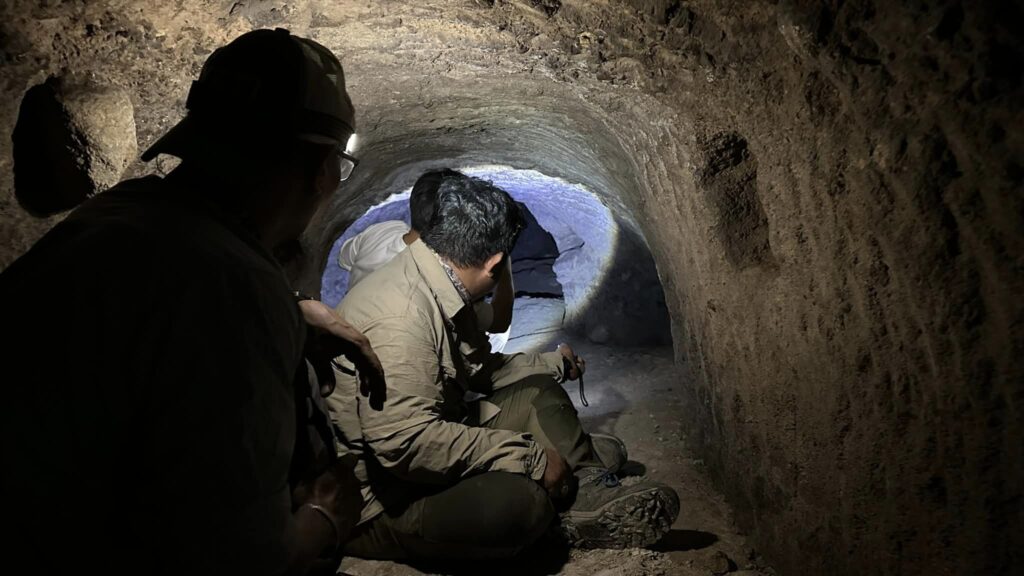


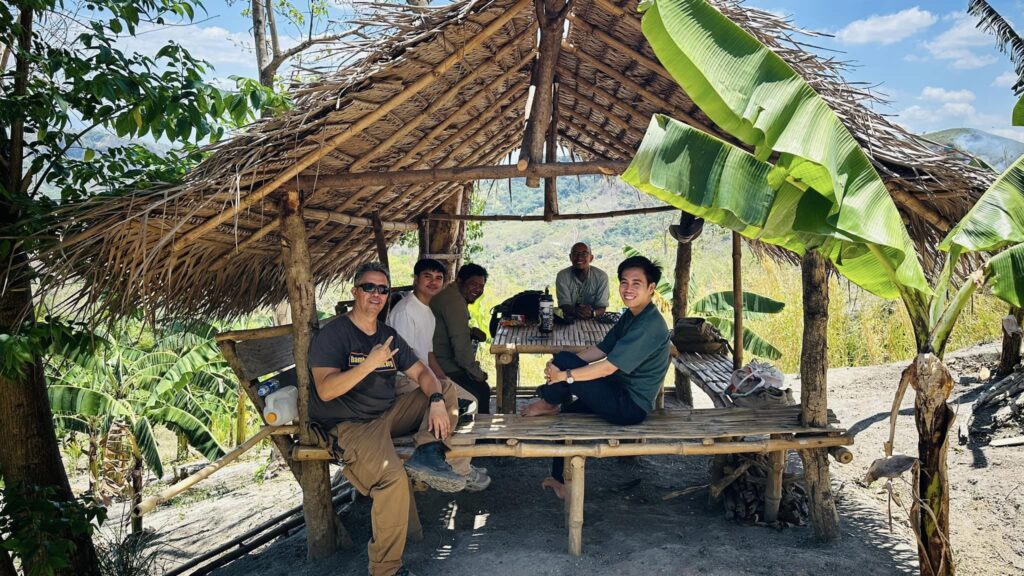
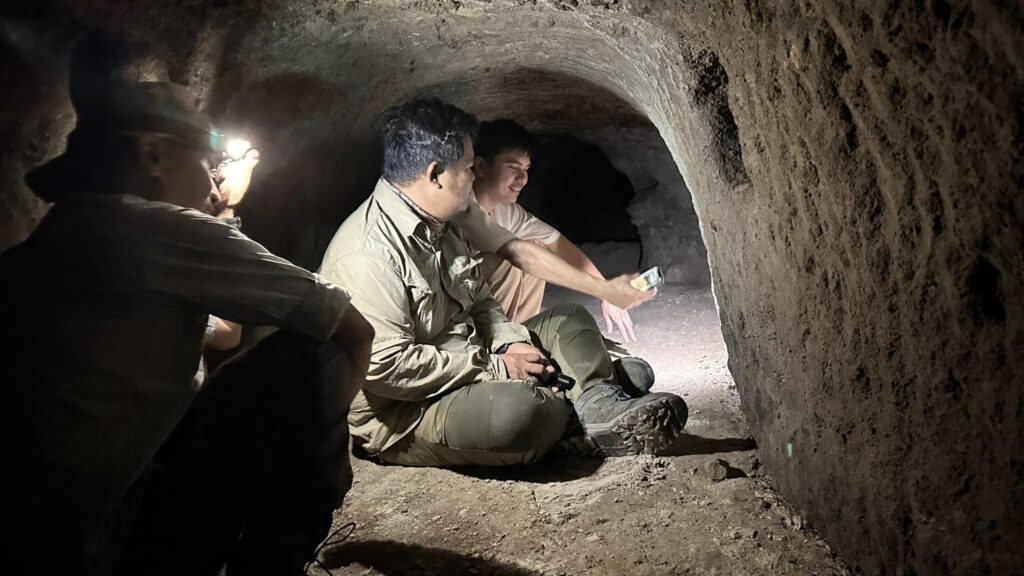
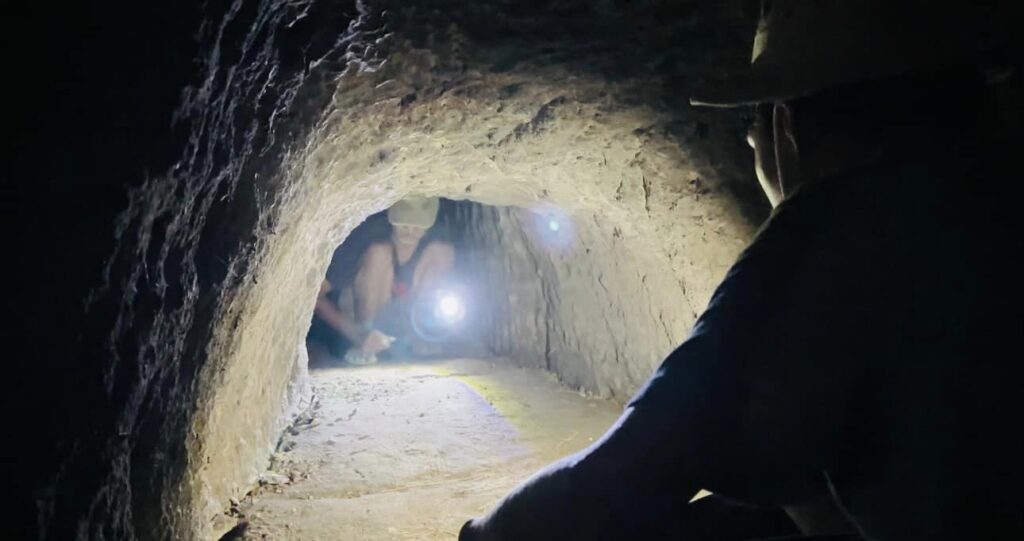
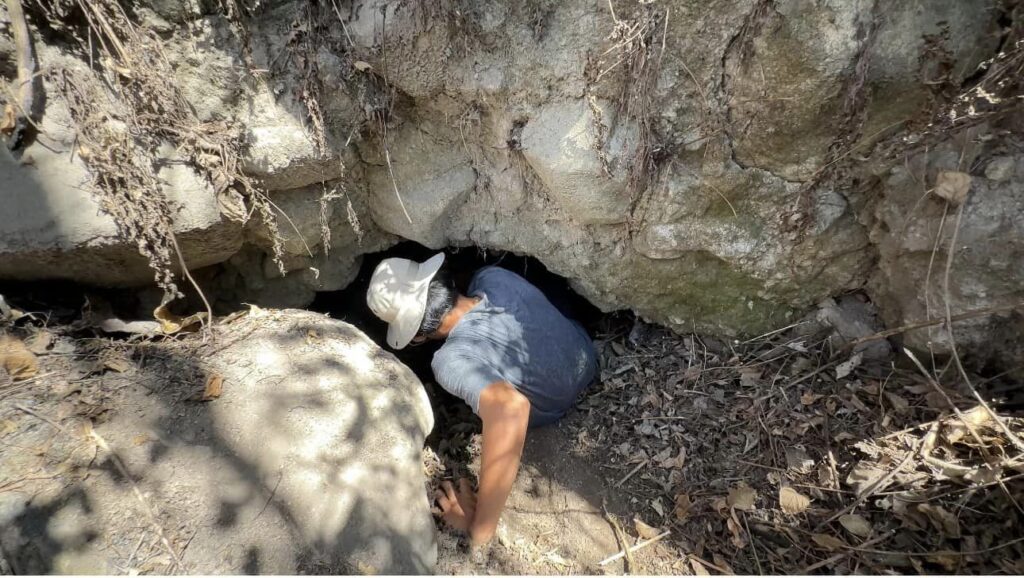
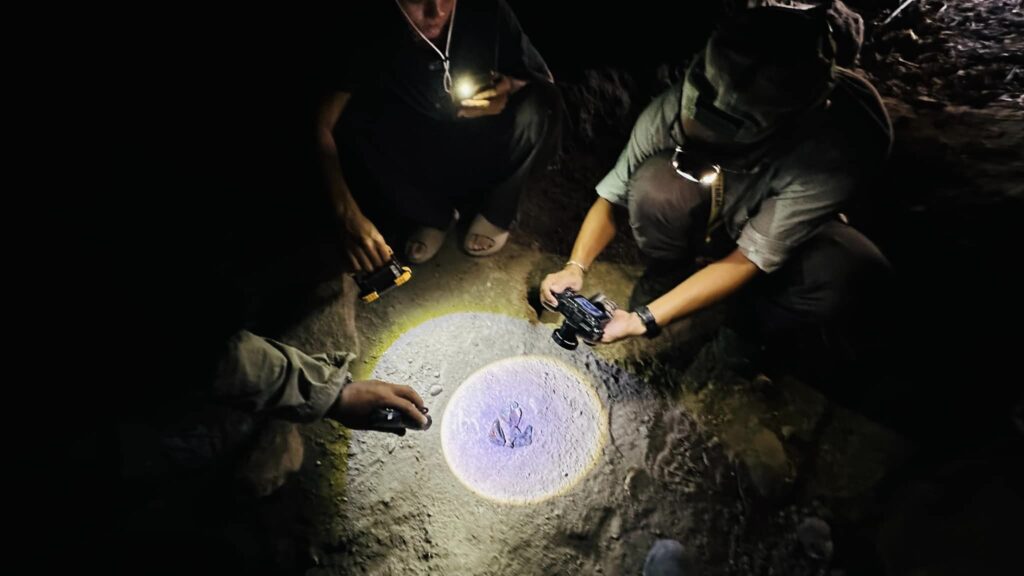

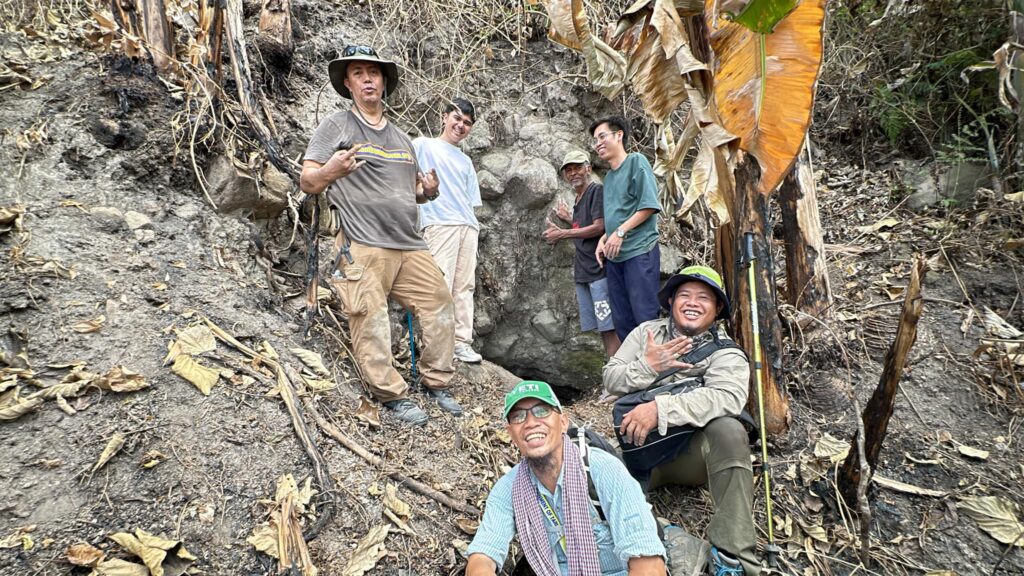
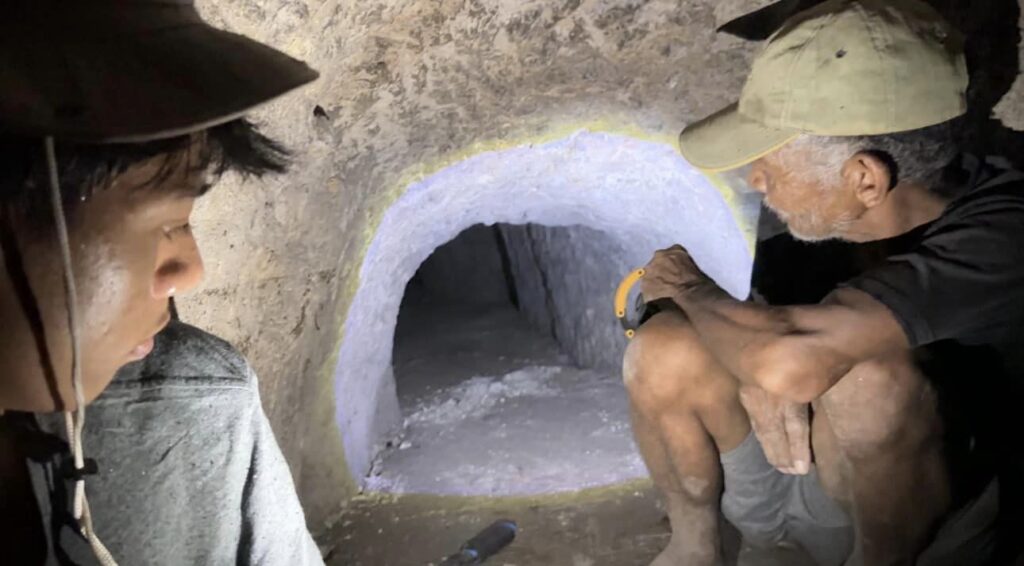
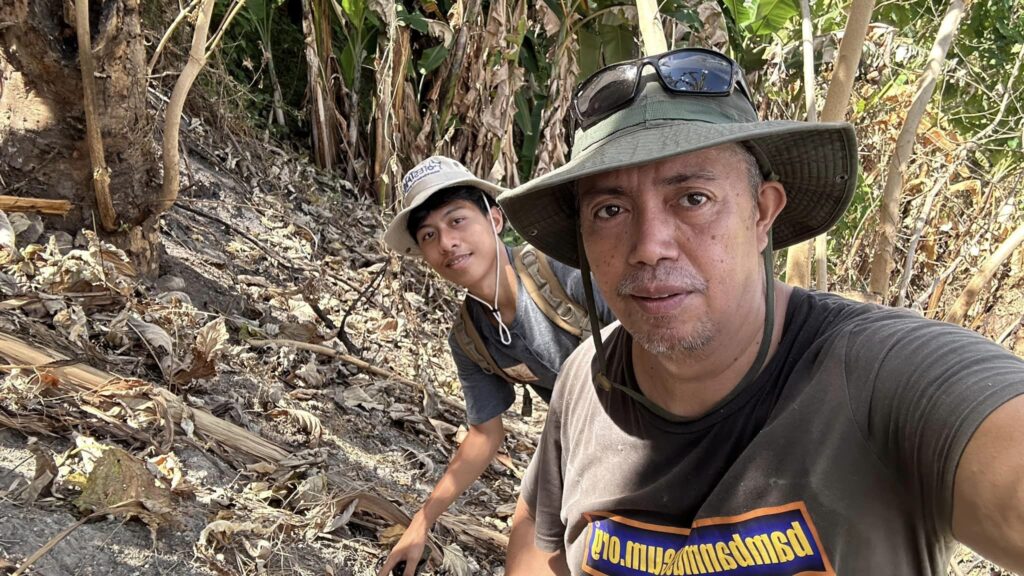
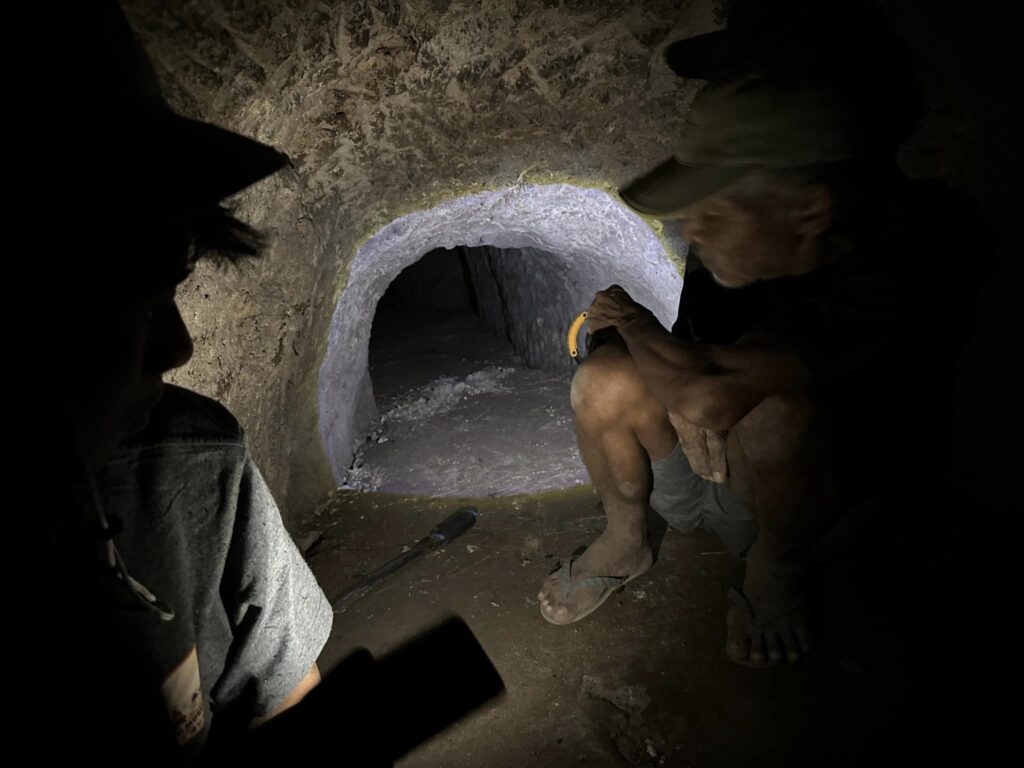


Thank you Kabalen for preserving the rich history of our beloved town.